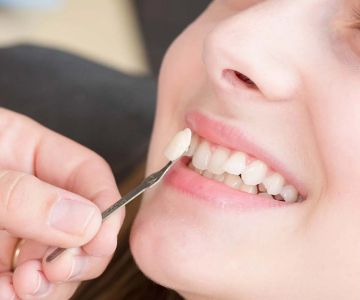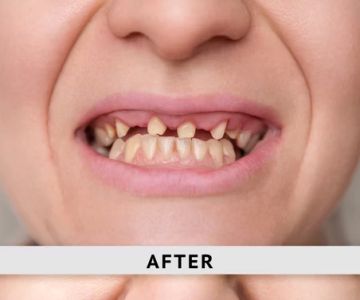Tooth Restoration Methods and Techniques Explained
The need for tooth restoration can arise from various circumstances such as decay, trauma, or wear and tear over time. Restoring teeth to their natural function and appearance requires a combination of modern techniques and a deep understanding of dental health. In America, where dental care accessibility varies, understanding these methods is vital for making informed decisions. This article provides insights into the methods and techniques of tooth restoration, highlighting the benefits and suitability of each option.
Understanding the Basics of Tooth Restoration
Tooth restoration involves different methods aimed at restoring the health, function, and appearance of teeth. The most common techniques range from simple fillings to more complex procedures like bridges or implants. The choice of method depends on the condition of the tooth and the desired outcome. According to the American Dental Association, over 100 million fillings are placed annually in the United States, illustrating the high demand for restorative services. Each technique provides specific benefits and can significantly impact oral health.
Common Techniques: Fillings and Crowns
Fillings and crowns are the most prevalent tooth restoration techniques. Fillings are used to treat cavities by removing decayed material and filling the space with materials like composite resin, amalgam, or gold. Crowns, on the other hand, are used for more damaged teeth, covering them entirely to restore their shape and function. The choice between fillings and crowns depends on the extent of the damage and the specific needs of the patient.
The Role of Veneers in Aesthetic Enhancement
Veneers, often made from porcelain or composite materials, are thin coverings placed on the front surface of the teeth to improve their appearance. They are especially common in cosmetic dentistry for correcting issues like discoloration, chips, or minor misalignments. Veneers are a preferred choice for many due to their durability and ability to closely mimic natural teeth. The process requires careful consideration and customization to match the patient's enamel.
The Advantages of Dental Implants
Dental implants offer a permanent solution to tooth loss, providing a stable foundation for replacement teeth. Implants are increasingly popular in the United States due to their success rate and natural feel. They involve placing a titanium post into the jawbone, which acts as a root for the artificial tooth. This procedure not only restores appearance but also helps preserve jawbone density, preventing future dental issues.
Bridges and Removable Dentures: Versatile Solutions
Dental bridges and removable dentures are alternatives to implants, especially when multiple teeth need replacement. Bridges involve anchoring artificial teeth to adjacent natural teeth, providing a seamless transition. Removable dentures, whether partial or complete, offer flexibility and are a cost-effective option for many. However, they may not be as comfortable or stable as permanent solutions, and maintenance is crucial for long-term use.
Innovative Techniques and Future Trends
The field of restorative dentistry is ever-evolving, with new technologies and materials enhancing treatment options. Innovations like digital imaging and CAD/CAM technology allow for precise customization and faster production of restorations. Additionally, bioactive materials that promote natural tooth repair are becoming more prevalent. These advancements are making tooth restoration more efficient, comfortable, and accessible for patients.
Conclusion: Making Informed Decisions
Understanding the various methods and techniques of tooth restoration helps in making informed decisions about dental care. Each method—be it fillings, crowns, veneers, implants, bridges, or dentures—has unique advantages tailored to different needs. It is essential to consult with a dental professional to determine the best course of action based on individual circumstances. Regular dental visits and proactive care are crucial to maintaining oral health and enjoying the full benefits of restoration methods. For more information, visit Dentistry Toothtruth.







 Westgate Dental Arts
Westgate Dental Arts Coventry Family Dental
Coventry Family Dental Familia Dental
Familia Dental Dr. Daniel S. Fife, DDS
Dr. Daniel S. Fife, DDS Dentistry At Suburban Square: Michael I. Wollock, DMD
Dentistry At Suburban Square: Michael I. Wollock, DMD Comfort Care Dental
Comfort Care Dental The Importance of Oral Health Education During Pregnancy for a Healthy Pregnancy
The Importance of Oral Health Education During Pregnancy for a Healthy Pregnancy Why Skipping Dental Checkups Can Lead to Bigger Oral Health Problems
Why Skipping Dental Checkups Can Lead to Bigger Oral Health Problems Advantages of Porcelain Dental Restorations
Advantages of Porcelain Dental Restorations Best Tips for Brushing Your Teeth Properly for Healthy Gums: Essential Techniques for Oral Health
Best Tips for Brushing Your Teeth Properly for Healthy Gums: Essential Techniques for Oral Health How Can Diabetes Cause Tooth and Gum Problems? Preventing and Managing Oral Health Issues
How Can Diabetes Cause Tooth and Gum Problems? Preventing and Managing Oral Health Issues Healthy Habits for Promoting Good Oral Health and Hygiene: Tips for a Healthy Smile
Healthy Habits for Promoting Good Oral Health and Hygiene: Tips for a Healthy Smile